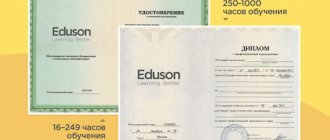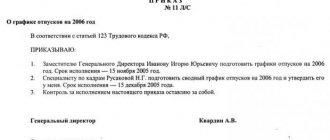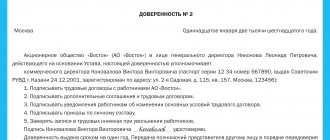Currently, probably, no profession has such a range of names as the profession of a personnel officer. In the Unified Qualification Directory you can find seventeen positions that are in one way or another related to personnel work. This circumstance makes us think about the differences between these positions and the functional load of each of them. Particularly relevant and acute today is the question of what an ordinary personnel inspector should write down for himself in his job description. We will try to consider the responsibilities of this employee in as much detail as possible.
Importance of HR Department
Many organizational leaders still believe that the purpose of the HR department is narrowly focused, related only to office work. However, today our country, following the West, has embarked on the transformation of the personnel service into a unit involved in the management of labor resources, because it is the personnel officer who is the most important link between the employee and the employer.
Currently, a personnel specialist is primarily a manager, the same can be said about a position such as a personnel inspector, whose responsibilities today often include not only processing and maintaining documentation. This is especially true for small companies, where the HR inspector may be responsible for personnel selection, training and many other functions.
https://youtu.be/p2yl7lNQxSo
Why every company needs a HR department
Although such a structure is not officially established by law, it is highly desirable that this division be present in an enterprise with more than 10 employees. The volume of documents provided for by the Labor Code of the Russian Federation as mandatory includes many complex documents that require correct and qualified completion. An improperly drafted employment contract, as an example, can lead to litigation if it does not stipulate all the rights and obligations of the parties under the law. In the same way, all other documents can lead to unpleasant situations if they were filled out unprofessionally.
https://youtu.be/ryddi855uh4
The status of an enterprise that has a well-established operation of personnel production has high indicators of reliability, stability, and prestige. This department plays a decisive role in establishing a policy of interaction between superiors and subordinates, determines the general atmosphere of calm among the staff, since it is essentially an intermediate link between the director and his subordinates.
Being an independent structural unit, the HR department takes on more and more new responsibilities every year. In today’s conditions, it is not so easy to do without HR officers in an organization, because the quality of hired workers, and therefore the company’s profit, depends on their work. In addition, the trend of recent years shows that the work for clerks is only increasing every year - government departments are introducing new reporting forms that complicate the paperwork process - and this increase in mandatory procedures will clearly continue, because in this way the state ensures transparency in the activities of public and private companies .
Top
Write your question in the form below
Number of personnel
The names and number of divisions of the personnel management service depend on the size of the enterprise, its traditions and the specifics of its activities. This should take into account the size of the organization, the direction of the business, the strategic goals of the enterprise, the stage of its development, the number of employees and priority tasks in working with personnel.
In large organizations, the HR department may include several departments. For example, the payroll department, employment department, training and development department, office management and accounting department. In small organizations, all the functions of the personnel service can be performed by only one specialist - the personnel inspector, whose duties in fact should include a minimum list of functions: personnel records management and personnel selection.
Conducting other personnel activities
In addition to maintaining documentation, the HR department is also responsible for searching and selecting personnel. The HR specialist must be able to draw up documentation on regulations and general requirements in accordance with the law, and store it properly in paper and electronic form. All necessary documentation must be submitted to the government agencies responsible for its storage within the time limits established by law - this is monitored by a responsible human resources specialist. All these requirements oblige the personnel employee to have a high level of self-discipline, organization, and responsibility.
Clerk knowledge, skills and abilities:
Document storage
- The clerk must know and be able to use electronic programs for collecting and storing information in databases, maintaining statistical data, and e-mail.
- A personnel employee must have a business style in communication and correspondence, have speech and writing literacy, and a culture of speech in order to be able to correct an incorrect document if necessary.
- The personnel officer must know and be able to apply in practice knowledge of the rights and obligations of the organization and government agencies and draw up documentation based on this knowledge.
- The HR officer monitors staff attendance, prepares certificates, draws up and stores personal files of employees.
Thus, the range of responsibilities of the HR department clerk is very wide and is not limited to just creating standard templates, filling out accounting forms, and issuing certificates.
Service specialists
HR departments or services are usually headed by a middle manager: the head of a service or department, who reports to the HR director. Departments can be divided into smaller units - groups or sectors, headed by managers who report to service heads.
In medium-sized enterprises (100-1000 employees), the organization of the personnel service most often involves the presence of the following employees:
- records management specialist;
- labor law specialist;
- recruitment specialist;
- development and training manager,
- trainer or training manager;
- benefits and compensation manager;
- corporate events manager.
In smaller organizations (number of employees up to 100 people), almost all functions of these employees are the job responsibilities of a personnel inspector.
Creation of personnel records
When opening a new enterprise, it is important to properly establish the procedure for the HR department from scratch. Below are step-by-step instructions for this:
- Applying for the job of a company manager. If he himself is an individual entrepreneur and the sole founder of the enterprise, then he signs an employment contract for both the employer and the employee. If there are other founders or the director was selected by competition, then the employer is the constituent meeting or the chairman of the election commission.
- Drawing up staffing schedules. Its unified form can be found on our website. It is not at all necessary to strictly adhere to it, but it is convenient to use. If desired, you can add additional columns to it. The staffing table indicates the names of positions, the required number of staff units, salary, form of remuneration, and required allowances. Positions are listed starting with the most important and ending with additional personnel.
- Development of a standard form of employment contracts. Their employees enter into agreements with an already hired manager. It must contain items that are specified as mandatory in the Labor Code of the Russian Federation. The employer can also add additional paragraphs if they do not contradict the laws.
- Drawing up a collective agreement. For all personnel units specified in the staffing table, a job description is developed.
- Creation of a list of documents necessary for personnel records management, indicating the terms and rules for their storage.
- Development of internal regulations for working with personnel: wage regulations, internal labor regulations, provisions on benefits and compensation for long working hours and hazardous production.
- Preparation of HR documentation logs.
- Distribution of responsibilities for maintaining and storing personnel documentation, working with personnel, if there is no separate position of a personnel specialist.
Here you can download a current sample of instructions on personnel records management.
Requirements for a personnel officer
Of course, all of the above positions cannot be combined by a single specialist - a human resources department inspector. The responsibilities of this employee are primarily related to personnel records management. Therefore, when hiring, relatively low professional requirements are imposed on a potential candidate for this position.
The qualification directory informs that a personnel inspector must have a specialized secondary education (his work experience does not matter) or secondary education (special training and professional experience of at least three years are required).
HR inspector: responsibilities
So, the functions of this specialist are as follows:
- maintaining records of the personnel of the enterprise;
- registration of various personnel transactions (reception, transfer, dismissal);
- registration and maintenance of personal files of employees, making changes to them;
- accounting, storage and filling out work books;
- accounting of work experience;
- preparation of certificates of employees’ work activities (past and present);
- registration of pension insurance cards and other documents necessary for assigning pensions to employees and their families, compensation and benefits;
- accounting for the provision of vacations, monitoring how vacation schedules are drawn up and observed.
ORDERS FOR PERSONNEL
The main document that reflects the managerial decisions of the head regarding personnel is the order. Orders formalize admissions and dismissals, vacations and promotions, assignments of responsibilities and assignments on business trips, etc. Therefore, orders for personnel are given a central place in the personnel department and in the archive.
The most common types of orders for personnel have ready-made forms that the personnel officer only needs to fill out:
• order to hire an employee (unified form No. T-1*);
• on transfer of an employee to another job (form No. T-5*);
• on granting leave to an employee (form No. T-6*);
• on termination (termination) of an employment contract with an employee (dismissal) (Form No. T-8*);
• on sending an employee on a business trip (form No. T-9*);
• on employee incentives (form No. T-11*).
Most HR officers in Russia use unified forms: HR officers themselves, employees and (most importantly) inspectors from the State Labor Inspectorate (GIT) are accustomed to them. The decision to use unified forms of documents must be recorded in the order (Example 5).
Developing your own document forms can be compared to reinventing the wheel. But if there is a desire, then the developed forms should contain no less information than those approved by the State Statistics Committee.
Unified order forms are more than enough for a personnel secretary to formalize standard personnel actions. But there are other orders for personnel: they are drawn up in the form of orders for main activities and do not have any unified form. For example, an order assigning responsibilities for maintaining personnel records (see Example 2). There may also be an order to change the surname, establish an increase, revoke or postpone vacation. These documents, drawn up in the form of an order for the main activity, remain orders for personnel: they contain personal data and are stored for the periods established for orders for personnel.
Storing orders for personnel . From the first day of the organization’s existence, orders for personnel must be separated from orders for core activities. This is due, firstly, to different shelf life. According to paragraph “a” of Art. 19 List of standard management archival documents generated in the process of activities of state bodies, local governments and organizations, indicating storage periods (approved by order of the Ministry of Culture of Russia dated 08/25/2010 No. 558, as amended on 02/16/2016; hereinafter referred to as the 2010 List) orders for core activities are stored permanently. Orders for personnel - 5 years (clause “b” (2) of the 2010 List) or 50 years (clause 2 of Article 22.1 of the Federal Law of October 22, 2004 No. 125-FZ “On Archival Affairs in the Russian Federation”, as amended dated June 18, 2017; hereinafter referred to as Federal Law No. 125-FZ).
Secondly, upon liquidation of the organization, orders for personnel will be transferred to state storage. The likelihood that orders on core activities will be of interest to the Archival Fund of the Russian Federation is very low, so they will most likely be destroyed.
Nuances of case formation . Orders for personnel are formed into cases during the calendar year. There must be at least two cases: the first - with a shelf life of 5, the second - 50 years. In the future, when there are more orders for personnel, the number of cases will also increase. For example, separate cases will be formed: “Orders on the provision of annual paid leave”, “Orders on the hiring, dismissal, transfer of employees”, “Orders on the provision of parental leave”, etc. However, in the first years of an organization’s operation, the range of order topics is usually not very diverse, so you can get by with two things:
• case 1 – orders on the provision of annual paid leave, student leave, disciplinary sanctions, short-term business trips (retention period – 5 years);
• case 2 – orders for admission, transfer, dismissal, bonuses, provision of parental leave, leave without pay (retention period - 50 years).
Recruitment
The responsibilities of a human resources inspector often include recruiting personnel for vacant positions. This work is related to the placement of information in various sources about the available vacancy, including cooperation on this issue with the employment service, appointment and interviews with an explanation to the applicant of the nature of the vacancy, working conditions and salary level, determining the general level of the applicant for the vacant position , his experience and degree of professionalism.
Often, the job responsibilities of a personnel department inspector involve conducting competitive selections among specialists applying for a vacant position. The personnel officer develops recruitment measures and monitors the passage of future employees through the tests established when concluding an employment contract with them.
Organizational structure of the personnel department
- Quick response to changes and additions.
- Optimization of employee functions with the transfer of direct control to lower management.
- Distribution, consolidation of appointments within the organization.
- Regulating the rational number of employees subordinate to the manager.
- Respect for the rights and responsibilities of employees.
- Clear distribution of organizational powers.
- Minimizing expenses of the management structure.
This is not a complete list. The work pattern is influenced by groups of factors:
- Features of the organization's structure.
- Technologies, type of production.
- Corporate ethics style.
- Developing or following effective existing patterns.
The design of a service's organizational structure may be influenced by one or more factors. The following indicators are taken as the initial data:
- Number of leadership levels.
- State.
- Control type.
The structure of the HR department combines two levels - functional and linear. The first type of management reflects the division between the management of the enterprise and other levels. To build it and assign the technological sequence of production to each manager (or authorized person), the matrix principle is used.
Additional functional responsibilities of the HR inspector
There are some additional functions that are most often classified as HR work. What other tasks should the HR inspector solve? Responsibilities may include:
- preparing the necessary materials for certification, qualification, and competition commissions, nominating employees for awards and incentives;
- studying the reasons why staff turnover occurs, developing and implementing measures to reduce it;
- preparing documents for filing in the archives;
- control over labor discipline;
- organization of advanced training and professional retraining;
- organizing examinations to confirm qualifications;
- development of a system for assessing the personal and business qualities of employees, motivating them for career growth;
- registration of service certificates and their issuance;
- formation and effective use of personnel reserve.
Military registration
Many employers believe that the functional responsibilities of a personnel department inspector include military registration of enterprise employees. According to Decree of the Government of the Russian Federation No. 719 of November 27, 2006 “On approval of the Regulations on military registration”, the number of employees carrying out this activity must be directly proportional to the number of employees subject to registration.
In particular, in an enterprise where there are less than five hundred citizens registered with the military, the records are kept by one employee who performs these functions part-time. Thus, a personnel inspector in an organization where the number of people on military registration does not exceed five hundred people can deal with military registration, but only under the condition of internal part-time work. And if there are a larger number of people to be counted, a separate staffing unit should be allocated for these purposes.
The work of personnel officers in a crisis
In the last year, enterprise management has been faced with the sad circumstances of a financial crisis, when they have to reduce the volume of production of goods and services and reduce their own costs, including by reducing the number of personnel. Against this background, there is an increasing need for personnel workers to possess the qualities of full-time psychologists who are forced to manage the emotional background in the team and find words of consolation, for example, when handing notices of dismissal to colleagues.
The role of HR is increasing as human resources become increasingly important to an organization's financial success. In this regard, the traditional responsibilities of HR officers do not disappear. Personnel services remain in charge of issues of personnel records management, remuneration, hiring and training of specialists. However, the HR department is an integral element of competent enterprise management. Good luck in job!
Main components of accounting
HR department employees must be able to perform the following activities :
- Registration of an employee upon his employment.
- Carrying out paperwork for moving existing employees from one position to another.
- Establishment of regulatory relations between employees of the organization and their employer.
- Implementation of employee registration procedures.
- Drawing up a staffing schedule so that employees can be informed about upcoming weekends and working days. It can be edited and modified depending on the wishes of the current management.
- Compilation of records of employees included in the organization.
- Storage of work books and contracts. Often, the labor inspectorate, when visiting an organization to conduct an inspection, pays close attention to the work book and its proper execution.
- Drawing up a time sheet that facilitates the correct recording of working hours and the presence of breaks at the enterprise. This procedure is carried out to avoid violation of legal regulations.
- Drawing up documentation about the personal data of employees of the organization, as well as the protection of information stored in it.
- Creation of payroll statements.
- Audit logs are especially relevant for the activities of individual entrepreneurs and legal entities.
- Printing of orders relating to statements, memos, as well as dismissal of employees.
Read our article on how to create a staffing schedule.
In addition to those documents that are considered generally accepted at enterprises, there are specialized documents . This is especially true for those organizations related to a specific type of activity.
If the manager does without creating a personnel department, then he himself performs all of the above functions, or it is possible to order the services of a third-party company that provides a similar type of activity for a fee.
It is quite problematic to study all the intricacies of personnel records management. Therefore, it is necessary to deeply engage in the development of the field of activity in which the company is developing.
In HR production it is impossible to do without keeping logs. To date, a list of those magazines without which the personnel department of any company cannot develop. These include accounting:
- labor agreements;
- employee vacations;
- business trips;
- medical examination schedules;
- orders drawn up for the personnel of the enterprise.
When maintaining documentation for a modern enterprise, it is important to compile it correctly. The main documents include:
- Order on the admission of a single employee to the staff of the organization (indicated by number No. T-1).
- Order “No. T-1a” on the admission of two or more employees to the workforce at this enterprise.
- No. T-2 is a sample for a personal card intended for each employee.
- The vacation schedule is designated No. T-7.
- No. T-8 is an order aimed at reducing the current employment contract.
- No. T-10 Formation of a travel certificate.
- No. T-11 Document for rewarding an existing employee.
- No. T-12 Working time sheet.
- The order on granting leave is designated No. T-6.
- Order No. T-5a is aimed at transferring employees to another job.









